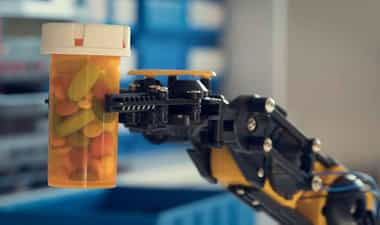May 12, 2025
Blog Life Sciences Organ-on-a-Chip Market: Innovation, Investment, and Real-World Impact
In today’s fast-paced biomedical world, researchers and pharmaceutical companies are continuously looking for smarter, faster, and more accurate methods to understand how the human body reacts to diseases and drugs. This is where Organ-on-a-Chip (OoC) technology comes into play—a powerful tool that brings human organ simulation to the lab bench in a way we’ve never seen before.
As global healthcare systems demand better testing models, quicker drug development, and alternatives to animal testing, Organ-on-a-Chip is emerging as a transformative force. But what exactly is it, and why is it creating so much buzz?
Organ-on-a-Chip devices are microfluidic cell culture systems that replicate the physiological and mechanical functions of human organs. They are often the size of a USB stick or microscope slide, yet they can mimic complex organ behaviors such as breathing (lung-on-a-chip), blood flow (heart-on-a-chip), or metabolism (liver-on-a-chip).
These chips contain tiny chambers lined with living human cells and fluids, allowing researchers to monitor organ-level responses in real time. They provide a more accurate, ethical, and cost-effective alternative to traditional lab testing on animals or static cell cultures.
Organ-on-a-Chip technology is advancing our understanding of human biology. It is increasingly adopted by pharmaceutical companies, regulatory agencies, and research institutions due to its ability to:
In short, it makes research faster, more ethical, and more relevant to human health.
According to BCC Research, the global Organ-on-a-Chip market is expected to grow from $153.2 million in 2024 to $651.9 million by the end of 2029, reflecting a compound annual growth rate (CAGR) of 33.6% during this period.
This remarkable growth reflects rising R&D investments, increased interest in precision medicine, and a greater awareness of alternatives to animal testing. Currently, North America leads the market, while Asia-Pacific is poised for the fastest growth due to expanding biotech sectors and favorable government initiatives.
The global Organ-on-a-Chip market is expected to grow from $153.2 million in 2024 and is projected to reach $651.9 million by the end of 2029, at a compound annual growth rate (CAGR) of 33.6% during the forecast period of 2024 to 2029.
Organ-on-a-Chip devices can be designed to simulate a variety of organs, depending on research needs:
These chips can also be linked together, forming multi-organ systems (body-on-a-chip) for systemic drug testing.
Core Focus: Toxicity screening, disease modeling, and drug efficacy for pharma and regulatory agencies.
Core Focus: Gut-on-a-chip, blood-brain barrier models, and oncology-focused 3D tissue models.
Core Focus: Multi-organ interaction, long-term culture, and chronic toxicity studies.
Core Focus: Liver disease modeling, drug metabolism, and virology applications.
Core Focus: Vascular interface modeling, neuroscience, and nephrotoxicity screening.
FDA Approval: The FDA’s ISTAND Pilot Program has accepted its first liver-on-a-chip data to assess drug-induced liver injury, marking a major step toward regulatory adoption.
Funding Momentum: Startups like TissUse and Nortis have secured new grants and venture funding aimed at developing multi-organ systems.
Public Investment: MIMETAS has partnered in a €124 million project funded by the Dutch National Growth Fund to promote animal-free biomedical innovation and advance organ-on-a-chip development.
Academic Support: In March 2024, Queen Mary University received a £7 million grant to establish an EPSRC Centre for Doctoral Training focused on Organ-on-a-Chip technologies, which will support the next generation of scientists and bioengineers.
Organ-on-a-Chip technology is no longer a future concept, it's a present-day solution that transforms how we study, test, and personalize medicine. With strong market growth, significant public and private investment, and expanding real-world applications, OoC platforms are becoming essential tools in modern biomedical science. As innovation progresses, this tiny chip may hold the key to some of healthcare’s biggest breakthroughs.

Karishma Arora is an Assistant Team Lead in Marketing Operations at BCC Research, with a master's degree in commerce. She is a passionate marketer with a knack for creativity and data-driven strategies.

Radiopharmaceuticals represent a cutting-edge frontier in modern medicine, offer...

Implantable Remote Patient Monitoring (IRPM) devices are revolutionizing healthc...

Single-cell analysis is revolutionizing our understanding of cellular diversity ...

We are your trusted research partner, providing actionable insights and custom consulting across life sciences, advanced materials, and technology. Allow BCC Research to nurture your smartest business decisions today, tomorrow, and beyond.
Contact UsBCC Research provides objective, unbiased measurement and assessment of market opportunities with detailed market research reports. Our experienced industry analysts assess growth opportunities, market sizing, technologies, applications, supply chains and companies with the singular goal of helping you make informed business decisions, free of noise and hype.